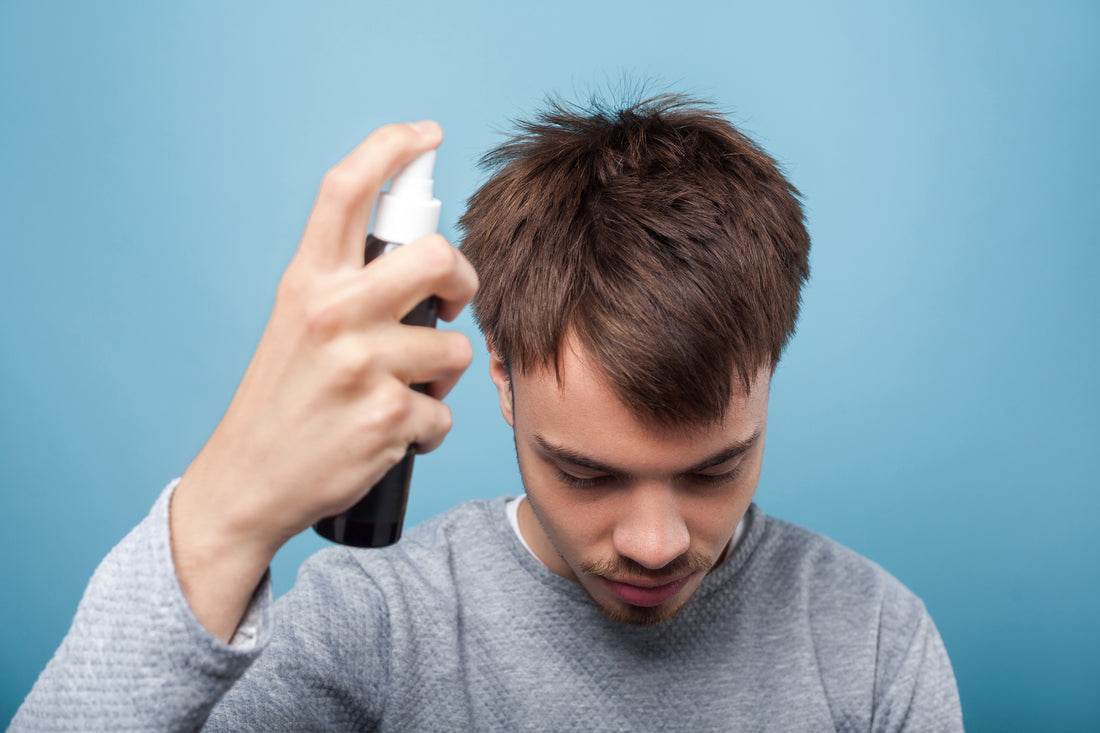Author: Dr. Moin Iqbal, MBBS
Register Medical Practitioner
HAIR LOSS
- Hair loss is among the common disorder of hair that affects a major percentage of the male group.
- It is characterized as hair thinning in a particular pattern.
- It is mostly caused by one of the male hormones DHT (dihydrotestosterone). this hormone shows the impact on the growth of hair or, on the anagen phase of the hair growth cycle. This hormone affects the follicles, which in turn causing a follicle to produce very fine, shorter hair.
- Due to Prolonged exposure to this enzyme, the affected follicles gradually disappear leaving behind a bald pattern of the scalp.
- The hair loss in turn causing stress, low self-confidence as well as low self-esteem in most individuals. In hair loss usually, follicles of hair go through shrinkage and in turn causing the hair to grow less or towards thining.
- The treatment of hair loss which is mainly ignored must be addressed clinically. As it has much impact on a person's behavior.
- If you are seeing that your hair is decreasing and getting thin don't stress out. Here is one of the products which are proven to be effective towards hair growth without having any side effects. i.e finasteride.
TREATMENT OF HAIR LOSS:
Oral finasteride belongs to class antiandrogenic is the most commonly used compound for the hair loss treatment of males. It mainly works by inhibition of (DHT) type II 5 alpha-reductase enzyme. Another drug is also used in minoxidil.
Miodoxil and finasteride are the two main drugs used for this purpose and also approved by FDA. But few individuals, as well as long-term use of this product, may lead to some side effects i.e. depression and sexual disorders.
ORAL FINASTERIDE VS TOPICAL FINASTERIDE:
When topical finasteride is compared with oral administration of finasteride it is concluded that both dosage forms show similar therapeutic effects. In contrast to the side effects, topical administration of finasteride shows minimal side effects as compared to oral administration. Oral administration of finasteride shows a 62-72 % reduction in DHT levels, whereas topical administration reduces DHT levels by 68-75%.
Oral finasteride posses potential side effects that must be considered. It includes lower sex drive, ejaculation disorder, depression, trouble with an erection. Apart from these side effects, oral finasteride is still well tolerated because these side effects can be easily reversed once the intake is stopped.
Topical finasteride is far safer as compared to oral administration because only small amounts of the drug reach the plasma.
RESEARCH-BASED EVIDENCE
A study was conducted to identify the effects of treatment with finasteride topically.
- Which includes case reports, prospective studies, and randomized controlled trials.
- Seven individuals were subjected to use finasteride topically and it was seen that there was a significant difference observed in hair loss rate, increased counts of hair, and positive hair growth.
- DHT (dihydrotestosterone) levels decrease widely due to topical application of Finasteride. Whereas, the serum testosterone level remained the same. (1)
In the year 1997, the first-ever study was conducted as a single-blind placebo, which includes 24 females and 28 males subjects, suffering from hair loss.
- Individuals were asked to use 1 ml of finasteride topically or placebo twice a day for 16 months on the affected area.
- Pharmacodynamic studies concluded that there was no major variation of the total testosterone, DHT, and free testosterone in the plasma.
- At 6 month stage, scientists observed that there was a major decline in hair loss in the topical administration of finasteride when compared with the placebo group.
- In general positive response was observed from the individual who used finasteride. 73 % of the individuals who are treated with finasteride reported high effectiveness as compared to those having a placebo. (2)
Another clinical trial was conducted with 45 individuals having hair loss and a comparison was made between topical administration and oral intake.
- The first group i.e group A received placebo tablets and finasteride gel. In the third month of the administration, hair count was increased.
- Whereas the increased hair count was observed in group B receiving placebo finasteride tablets and placebo gel.
- In this duration, the extent of alopecia remains the same in this group, whereas in the B group, the alopecia area shows major change at the treatment of 4 months in the end both groups show the increased and equal effect on hair growth. (3)
Researches reveal that when a comparison was made between topical finasteride and oral finasteride, no significant changes were observed.
- Caserini et al. States that they randomized 24 male individuals with open-label, single-center, parallel-group exploratory study with individuals either having a topical application or using tablets once daily for seven days.
- This study reveals that the topical finasteride slows hair loss by modulation of levels of DHT and also lowering the systemic exposure. (4)
Another study was also designed by Caserini et al. They further research the effect of dose of topical finasteride, by using randomized and parallel-group design.
- The major part study the 18 male individuals who apply 1 ml of topical finasteride 0.25 % solution to the affected area of scalp, either once or two times a day whereas another group uses oral tablets of finasteride 1 mg daily for a seven-day duration.
- An increase in pollakiuria and alanine aminotransferase and testicular pain was a notice in two individuals.
- The other part of the study comprises the 32 individuals receiving a different dosage of finasteride and placebo on the affected scalp once a day for seven days.
- Surprisingly it was concluded that one-time usage of topical administration shows to be more effective in decreasing DHT levels of plasma as well scalp as compared to the twice a day application.
- However, there was no remarkable difference observed among the varying concentrations of the topical administration of finasteride.
- Where 300 and 400 μL doses show higher plasma concentrations. Therefore higher doses are associated with higher chances of side effects.
- Fewer side effects like oropharyngeal pain, conjunctivitis, Presyncope, and headache were observed but rarely. (5)
REFERENCES
- Lee SW, Juhasz M, Mobasher P, Ekelem C, Mesinkovska NA. A systematic review of topical finasteride in the treatment of androgenetic alopecia in men and women. Journal of drugs in dermatology: JDD. 2018 Apr 1;17(4):457.
- Mazzarella GF, Loconsole GF, Cammisa GA, Mastrolonardo GM, Vena G. Topical finasteride in the treatment of androgenic alopecia. Preliminary evaluations after a 16-month therapy course. J of Derm Tr. 1997;8(3):18992. DOI:10.3109/09546639709160517.
- Hajheydari Z, Akbari J, Saeedi M, Shokoohi L. Comparing the therapeutic effects of finasteride gel and tablet in treatment of the androgenetic alopecia. Exp Gerontol. 2002;37(90)98190
- Caserini M1, Radicioni M, Leuratti C, et al. A novel finasteride 0.25% topical solution for androgenetic alopecia: pharmacokinetics and effects on plasma androgen levels in healthy male volunteers. Int J Clin Pharmacol Ther. 2014;52(10):8429
- Caserini M, Radicioni M, Leuratti C, et al. Effects of a novel finasteride 0.25% topical solution on scalp and serum dihydrotestosterone in healthy men with androgenetic alopecia. Int J ClinPharmacolTher. 2016;54(1):1927






